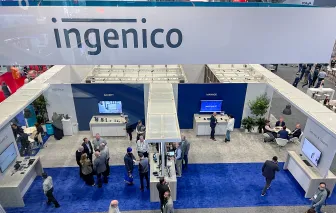When a consumer uses a debit card at their local retailer, they likely have no idea what happens behind the scenes to make that transaction possible.
Because it evolved from the ATM acceptance process, supported by multiple ATM networks, the point of sale (POS) payment system in the U.S. may be the most complex in the world. The past several years have added even more complications, which the U.S. Common Debit AID seeks to mitigate.
In this blog, we'll discuss the U.S. Common Debit AID and its importance to merchants throughout the country.
A little history
After the financial crisis of 2008-09, the U.S. enacted reforms designed to prevent an encore. These included limiting interchange fees that banks charge to merchants for debit card transactions as well as granting greater freedom to merchants, rather than card-issuing banks, to choose how transactions were routed.
With magstripe technology, ubiquitous on credit and debit cards prior to 2015, the network to which a transaction would be sent was usually selected at the processing switch – the point where the processor sends the payment authorization request to the card-issuing bank.
In 2015, EMV technology, named for the three major companies that first adopted it (Europay, MasterCard, and Visa), was introduced in the U.S. after being used in Europe for about 20 years. Due to the complexity of the US payment networks, the rollout of EMV technologies was purposely gradual. Now in 2022, EMV has largely superseded magstripe technology.
Why use Common Debit Aid?
To choose routing at the point of sale, a merchant would need to have their payment terminals configured with AIDs for every network to which they wanted to route transactions – a list that could not only become quite long but would require regular management and updates.
Enter the U.S. Common Debit AID, which can be used with any EMV debit payment system. It's one of two types of debit AIDs, the other being a card brand's unique "global" AID.
If a merchant elects to use the U.S. Common Debit AID, routing to any of the debit networks or card brands can happen at the processing switch based on cost, transaction amount or any other available parameter to meet the merchant’s need. If the card brand's global AID is selected, however, the transaction must be routed to that specific card brand network.
Other considerations and benefits
Adoption of EMV comes with added considerations involving cardholder verification methods (CVMs):
- Some card brands do not require a signature or PIN for purchases below a certain amount. In these cases, merchants should evaluate the business risk and work with their Processing Provider to configure their POS systems to refrain from prompting below set thresholds that are reasonable to each merchant's business. Note: Every merchant's risk tolerance varies on their transaction volumes, average sale numbers, and client base.
- When the U.S. Common Debit AID is selected, if a purchase exceeds a card's "no-CVM" limit and PIN entry is bypassed or not supported, merchants should work with their Processing Provider to configure their POS systems to require a signature.
There are two key differences between magstripe and EMV technology:
- The chip in an EMV card creates a one-time authentication code with each payment transaction when inserted into a POS terminal that are unique to that card, meaning that information from the transaction cannot be "skimmed" and used to create a fraudulent copy of the card.
- EMV cards contain applications, which correspond to application identifiers (AIDs) programmed into a POS payment terminal, to determine how the payment will be routed. Now, merchants are able to decide at the point of sale how transactions are routed.
The right POS system – and provider – can help you navigate the complexity of advances such as EMV and the U.S. Common Debit AID while taking full advantage of the myriad benefits they offer. Contact us to learn more.
Steven Bowles is Director of Security Solutions and Regional Security Officer at Ingenico










